Gallery Network
7 Questions for Ghanaian Artist Kojo Marfo on Achieving Success While Maintaining Joy
The artist is the subject of a solo exhibition with JD Malat Gallery, London, opening this month.
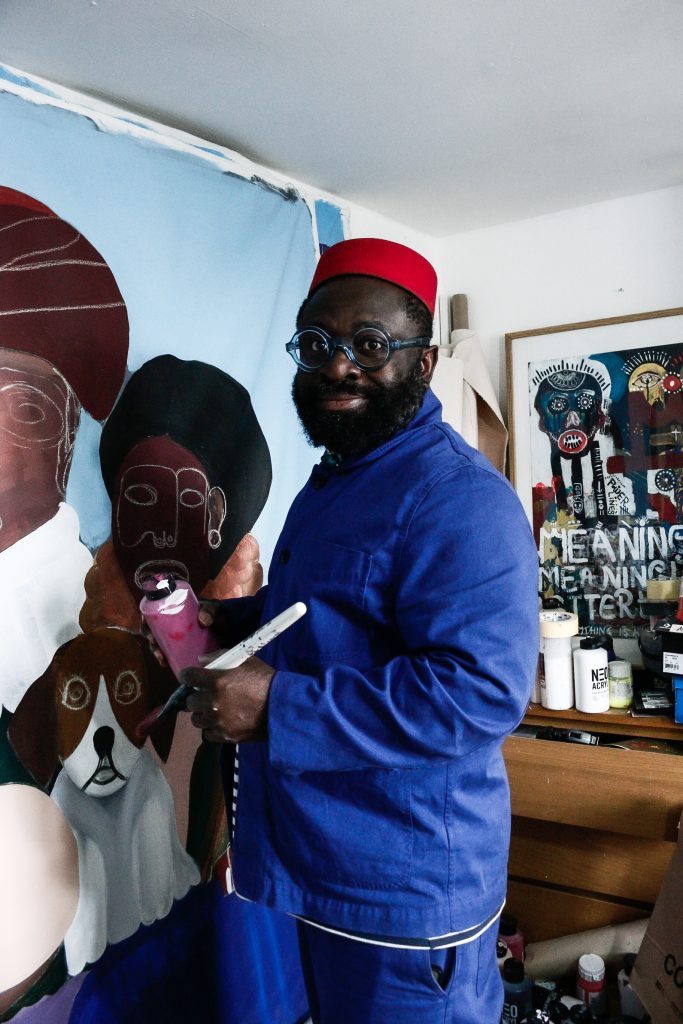
The artist is the subject of a solo exhibition with JD Malat Gallery, London, opening this month.

Artnet Gallery Network

Ghanaian-born, London-based multidisciplinary artist Kojo Marfo (b. 1980) is a self-identified afro expressionist and has developed a signature style recognized for its bold color schemes and graphic compositions. Inspired by his international travels as well as art history and archaeology, Marfo frequently engages with ideas around a universal heritage and collective experiences.
Opening October 11 and on view through November 11, 2023, JD Malat Gallery in London will present “Kojo Marfo: Crucible of Hope.” It will be the artist’s second solo show with the gallery, following his debut two years ago. Coinciding with the opening of Frieze Week, the exhibition feature Marfo’s recent body of work that explores experiences and ideas that are both deeply personal and universal. The show is accompanied by an exhibition catalogue featuring an entry by Barbican Center Curator and art historian Wells Fray-Smith.
We reached out to Marfo to learn more about the themes of the show and what he’s working on next.
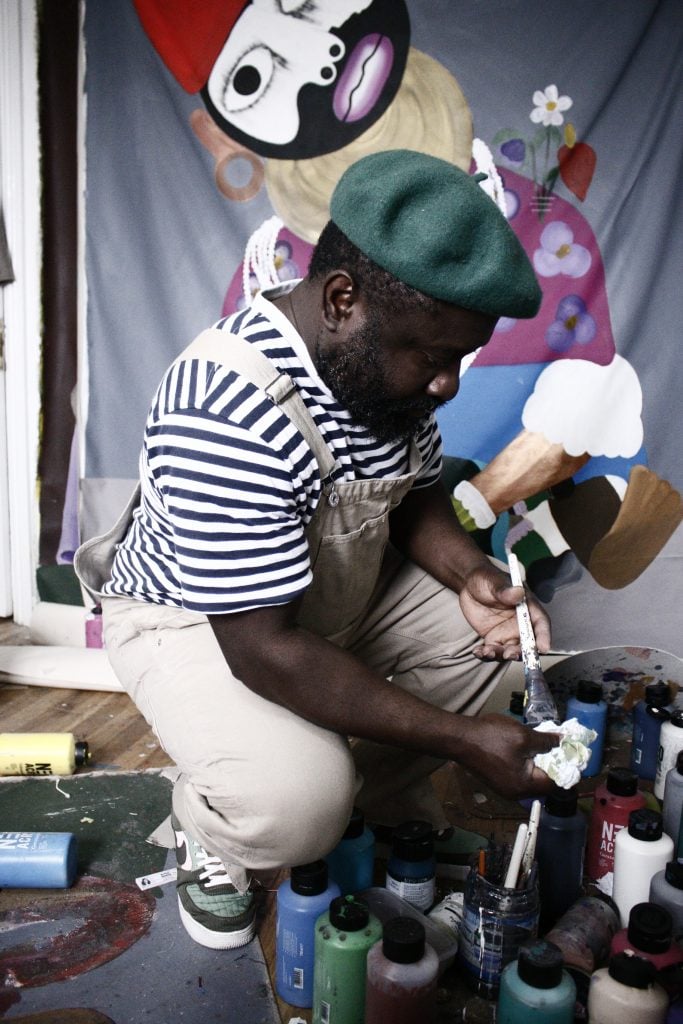
Artist Kojo Marfo. Courtesy of JD Malat, London.
Your exhibition “Crucible of Hope” is about to open at JD Malat Gallery. Can you tell us a bit about the works going on view and any overarching themes or inspirations for the show?
The “Crucible of Hope” exhibition aims to showcase the joys, hopes, and struggles we encounter on our life’s journey. These trials and aspirations are inherent to our existence, and the exhibition explores my personal experiences, as well as those of individuals I have encountered. By sharing these stories, my goal is to inspire a deeper understanding of the challenges we face as we strive for success and meaning in our lives, while also seeking to bring immense joy and fulfillment to our loved ones.
What are some ways that the works featured in the forthcoming show continue or diverge from the body of work that was shown in your debut in 2021?
The central focus of this show remains on societal and human issues, remaining consistent with the message I aim to convey as an artist. As I continue to explore the complexities of the human experience, my attention remains on the obstacles faced by humanity. Although there may be some slight alterations in the appearance of the figures, the impact on the audience remains unchanged.
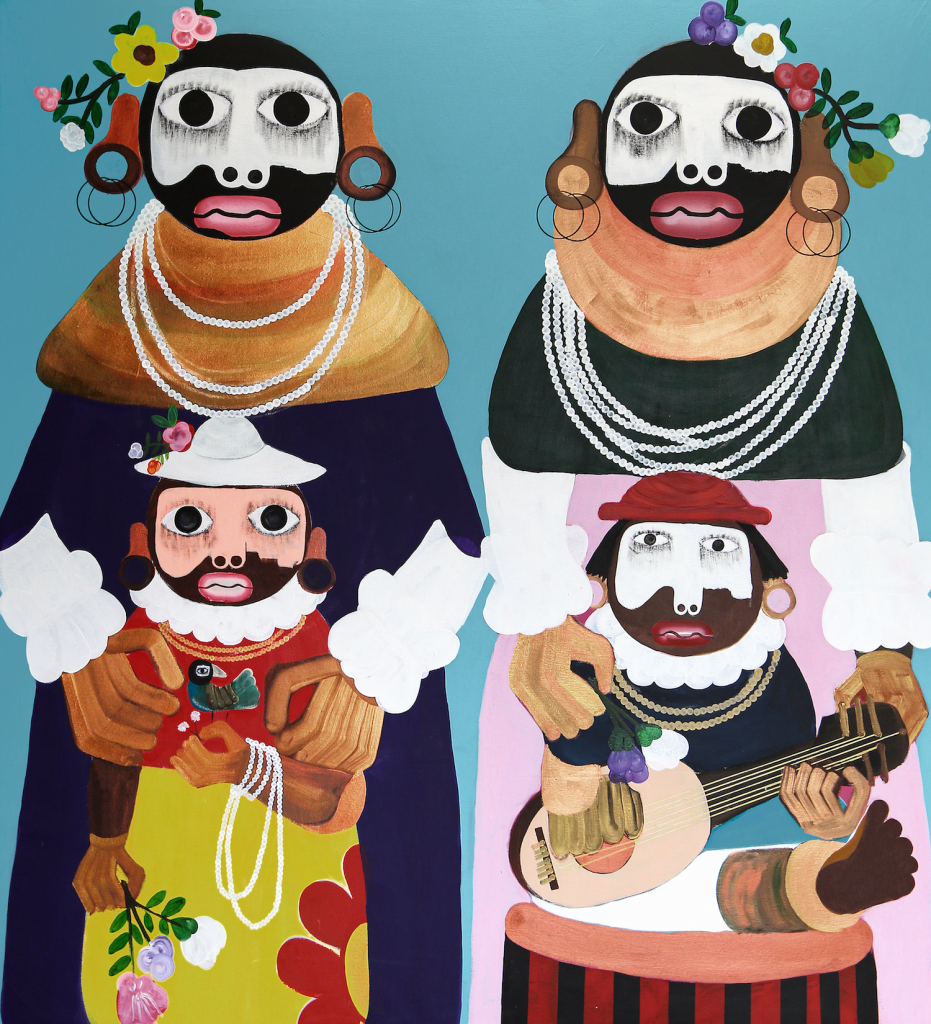
Kojo Marfo, Pride & Joy (2023). Courtesy of the artist and JD Malat, London.
Ideas around success and happiness are prevalent in the show, what do these mean to you on a personal level?
In the world I inhabit, success is often seen as mandatory, while happiness is considered a personal choice. I have made a conscious decision to prioritize my own happiness, but I have come to realize that this choice has inadvertently led to feelings of loneliness. Many of my friends and acquaintances have pursued success relentlessly, often at the expense of their own happiness, and sadly, some have even left this world without finding fulfillment in either area. My intention is to bring awareness to the fact that personal happiness should also be given great importance and should take precedence over the default mode of pursuing success that we have all inherited.
What would you like visitors to the exhibition to take away with them?
I hope that when people see the images portrayed in a figurative form, they can see themselves reflected in them. My aim is to help them understand that the motivations that drive them are the same motivations that drive all humans. I believe that this temporary separation from reality is necessary in order to confront and address the uncomfortable social, cultural, and political realities that exist. Through this shared experience, we can form stronger bonds and better connect with one another based on our universal human experiences.
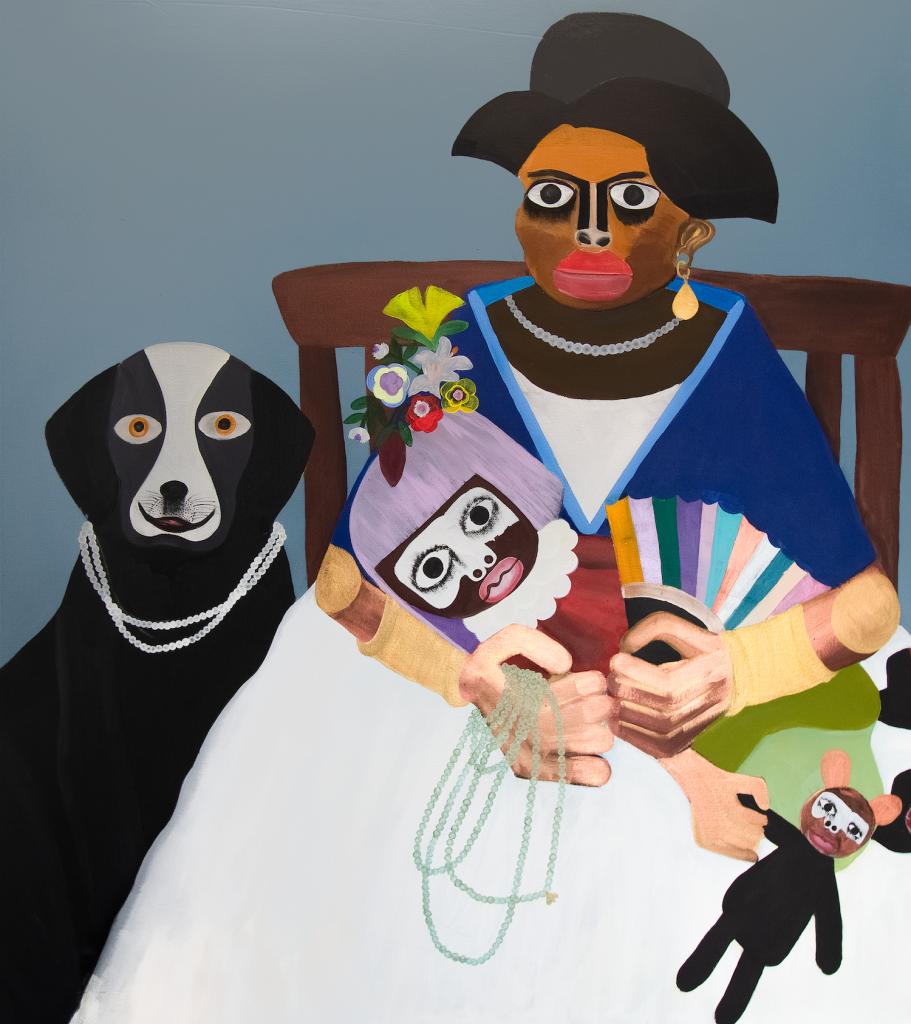
Kojo Marfo, Divine Symphony (2023). Courtesy of the artist and JD Malat Gallery, London.
How would you describe your creative process? Do you work toward a fully formed idea, or is it a more intuitive as you go?
All of my creations are rooted in intuition, devoid of any preconceived ideas or thoughts. To regain my creative flow, I often begin by sketching random and meaningless elements on the canvas. It is through this process that I gradually discern the direction I want to pursue. While the act of creating the images themselves may not be the most challenging aspect, the true difficulty lies in crafting a compelling narrative to accompany them. There are moments when I find myself sitting in my studio without the urge to paint, but I appreciate these instances as they provide an opportunity for me to contemplate social issues and the complexities of the human condition. In times when I feel creatively adrift, I seek inspiration from museums and galleries, which I refer to as my “lost mode” moments.
Where do you most commonly look for or find inspiration? Are there other artists or movements that have been particularly influential to the way you work?
In addition to my visits to museums and galleries, I find inspiration from a select few elite artists who have greatly influenced me. Leading the pack is Picasso, whose ability to reinvent historical paintings and depict human situations in a counter-traditional, poetic manner is truly remarkable. Picasso fearlessly experimented with various artistic techniques, borrowing, combining, and challenging both himself and his audience. Although he faced accusations of copying, he was far from being a plagiarist. Instead, he constantly sought out stimulation and new ideas from every possible source.
Among the other artists who have left a lasting impact on me are Fernand Leger, Francis Bacon, Ibrahim El Salahi, and Wilfredo Lam. Each of them possesses unique ideas and creative skills that have served as valuable sources of inspiration for my own work. Unfortunately, only one of these artists is still alive today, making their contributions even more significant.
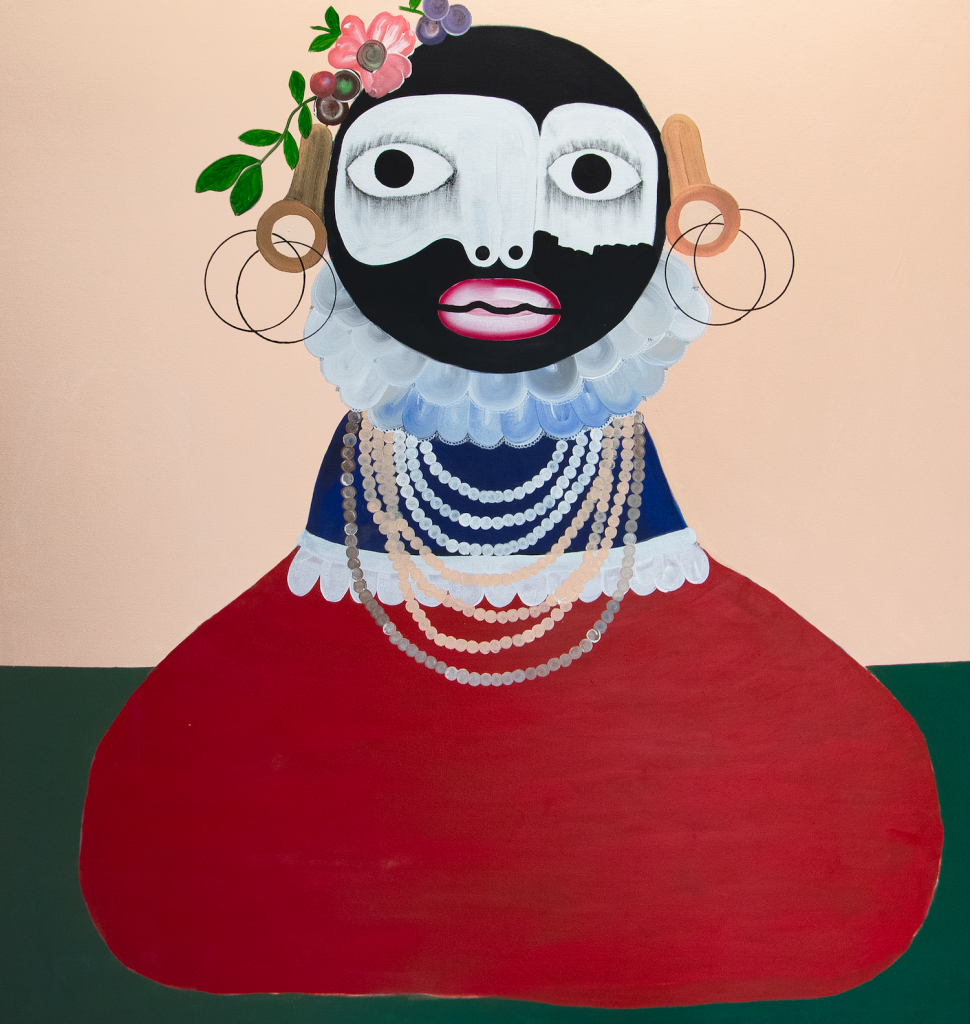
Kojo Marfo, Devotion #3 (2023). Courtesy of the artist and JD Malat Gallery, London.
Can you tell us about what you are working on now, or are planning to work on next?
Following my show in London, I have another exciting opportunity awaiting me in Istanbul, Turkey, either in January or February. I will confirm the exact date once all the necessary arrangements have been made. Additionally, I have several other projects in the pipeline, which I will announce at a later date. However, after these two shows, my focus will shift towards creating a new body of work for future exhibitions. Moreover, I plan to embark on a global journey, exploring different cultures and observing how people from diverse backgrounds live their lives. This immersive experience will undoubtedly provide me with fresh perspectives and further fuel my artistic inspiration.
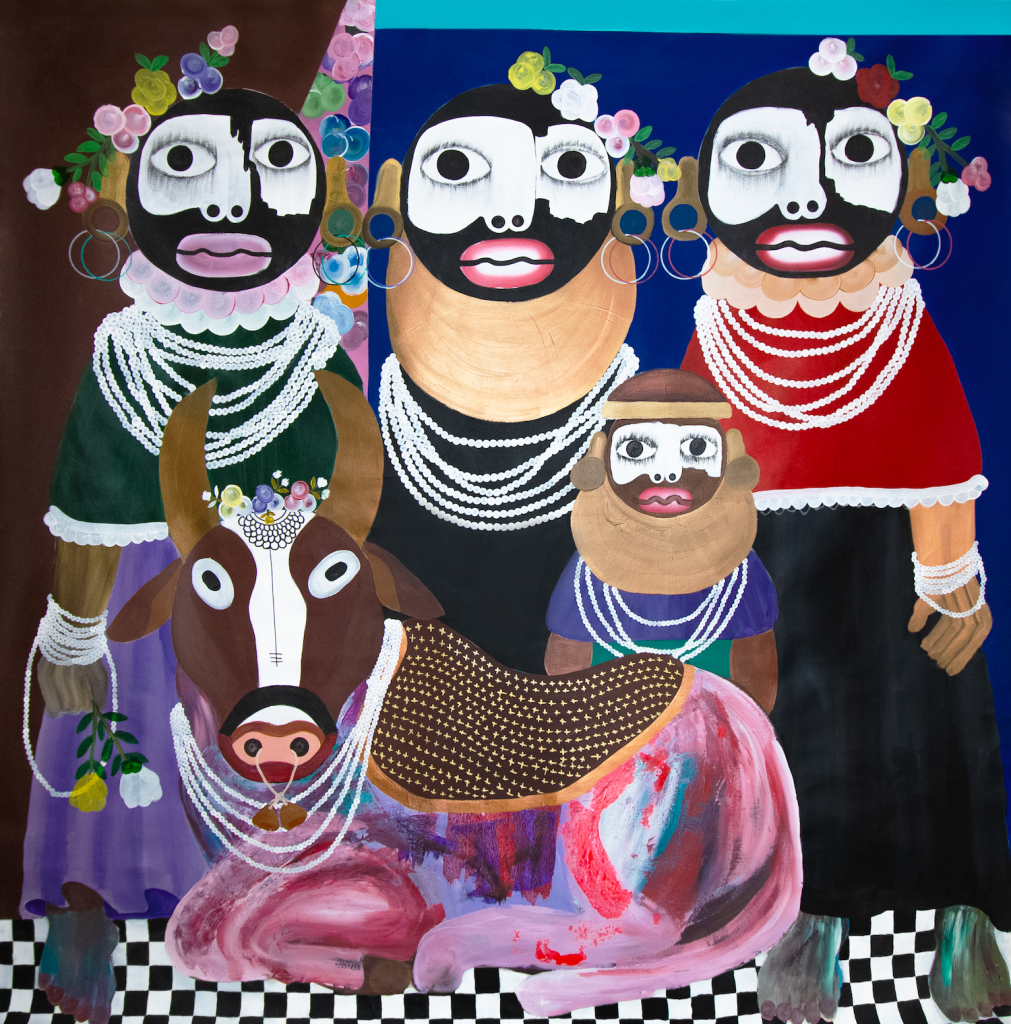
Kojo Marfo, Dominion (2023). Courtesy of the artist and JD Malat Gallery, London.
“Kojo Marfo: Crucible of Hope” is on view at JD Malat Gallery, London, October